Making Char Cloth
Char cloth. What the heck is it, and how do you make it? What is it good for? If you're reading this, perhaps you've heard of flint and steel fire making, and maybe you've got a passion for making fire like I do. It is an amazing resource that is super useful in any kind of fire making, modern or primitive, and downright necessary for flint and steel fire making. I've made it hundreds and hundreds of times, and in this article I'll show you everything you need to know to make your own char cloth, mistakes to avoid, how to use it to make fire, and even some alternatives.
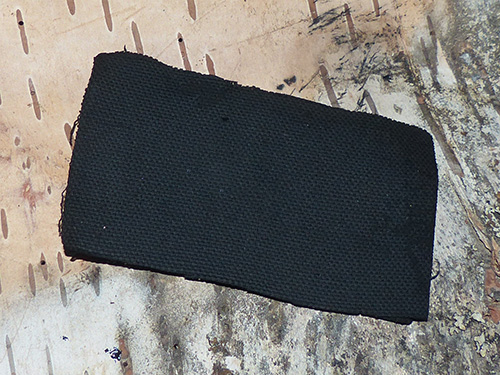
Char cloth is any cloth made from 100% plant fibers that has been charred but not burned. It is used in traditional flint and steel fire making to catch a spark, and grow that spark into an ember that can then be transferred to a tinder bundle and blown into flame.
Benefits of Char Cloth
Char cloth was used regularly in the 1600's and 1700's as part of flint and steel fire making. It has tons of advantages when it comes to making fire. Good quality char cloth is very reliable for catching sparks, much more so than many alternatives. It is windproof. Once you have caught a spark, not only will the wind not put it out, it will actually aid in the fire making process. It is super fun to make and use, and a great way to connect with nature, family, and friends. It is part of an awesome skill that most people don't have these days, and gives rise to personal confidence and resiliency.
How to make Char Cloth
1. Start with a small tin
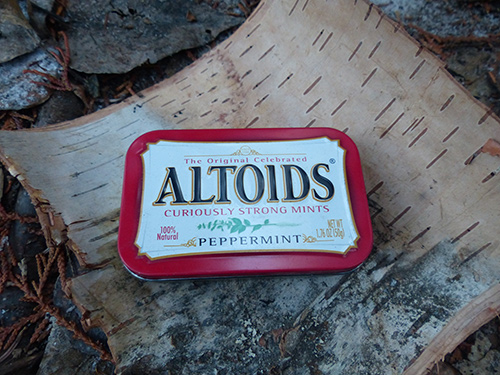
Any metal tin that closes tightly will work. Altoids mint tins are popular, because the size is just right. The size of your tin will limit the size of your char cloth, so keep that in mind.
2. Punch hole in tin
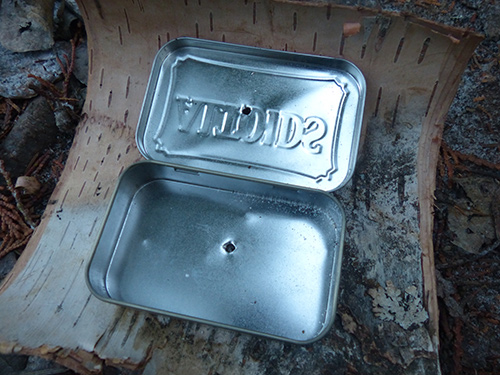
Use a small nail for this. You want a small hole on both sides of the tin. This allows gases to escape while the charcloth is cooking. If they don't escape you risk the gases building up pressure inside the tin and it blowing up! No fun.
3. Acquire your cloth
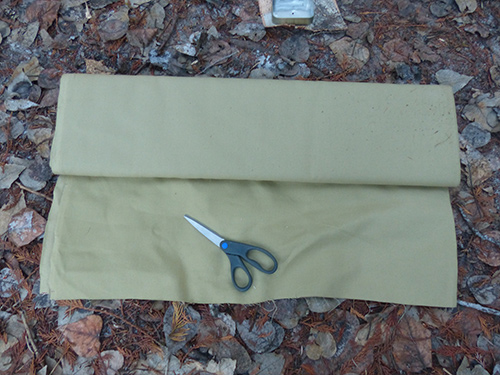
Your cloth needs to be 100% natural plant fiber. Cotton, linen, and jute all work fine. There is some misconception out there that only cotton will work, but that is not true. I've used linen and other types of all natural plant fiber cloth plenty of times and had great success.
What you want to avoid is synthetic cloth, like polyester. This will actually melt and isn't able to produce a final product that can catch a spark.
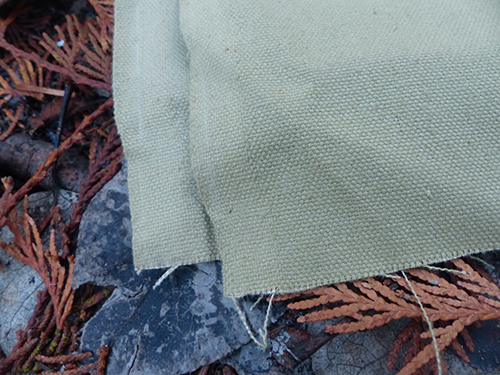
The best success I have is with thick, 100% cotton canvas with a rough, and loose weave. Some people call this "duck canvas" or "duck cloth", and it is similar to the material that some Carhaart pants are made of. This produces a final result with a rougher surface with more surface area that in turn catches a spark much easier. As commonly suggested, old t-shirts will work, but I find the final product not quite as easy to actually catch a spark with.
4. Cut your cloth
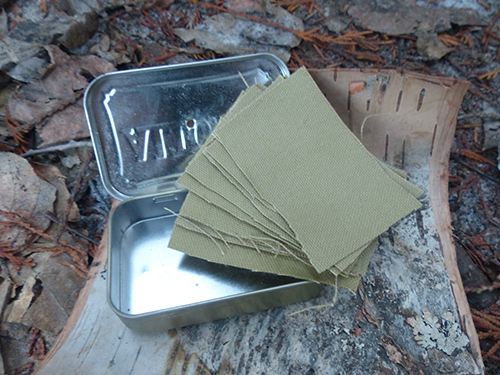
Cut your cloth into the largest pieces possible that will fit into tin without folding. I like approx. 3" x 2" pieces. Your cloth will shrink some while it cooks, so remember that your finished product will be smaller than your original cloth pieces.
5. Gently lay cloth pieces in tin
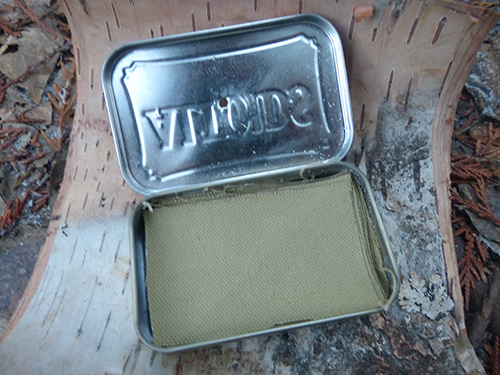
Don't pack them tight, just place them gently on top of one another. I find that I can fit about eight pieces of duck canvas into an altoid tin. Any more and it is too tight, and won't turn into char cloth properly.
6. Place closed tin on heat source
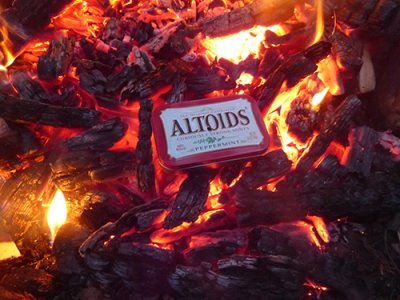
While any heat source will work (camp fire, wood stove, kitchen range, or camping stove), the best results I have had come from using a bed of coals in an open fire pit. I've experimented a lot, and I've found that the hotter fires like in a wood stove or a camping stove can actually ignite the cloth in the tin and either over cook it or burn it up completely. A nice bed of red hot coals is perfect, and produces the best results. Plus it is way more fun to sit around a camp fire compared to sitting around your kitchen range or a camping / backpacking stove!
7. Allow the tin to cook
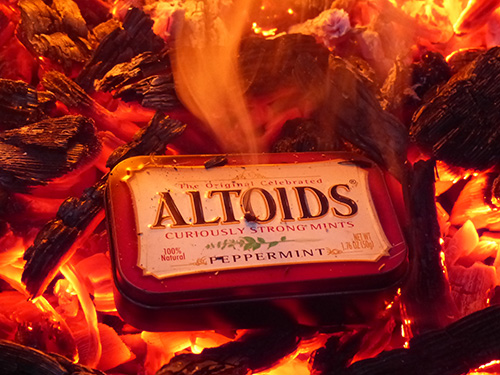
Watch for smoke coming out of the hole. You should see a steady stream of smoke coming out. After it is finished smoking, turn it over and cook the other side. Wait until the second side finished smoking, then pull it out off the heat source.
The process happening here is called pyrolysis. When an organic material is exposed to high heat in a mostly oxygen deprived setting, its composition changes as gases leave the material. This is the same process used to make charcoal and biochar, and many others.
8. Let it cool
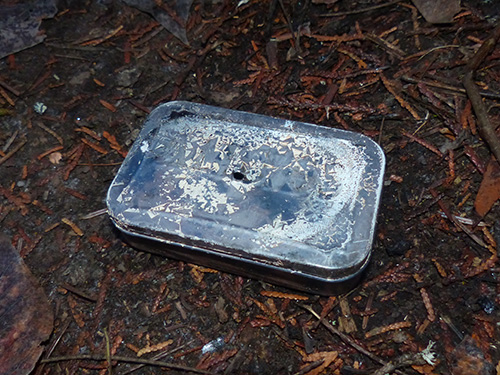
After the tin completely stops smoking, take it off the heat source and let it cool. Don't be in a rush to open it. It will be very hot, and as well it is possible that if you open it up quick, the oxygen from the air will rush in and may start it on fire. No good!
That said, I have had times where the charcloth had been ignited by the very fire that cooked it as I pulled it out. It's difficult to know if it is ignited or not when first pulling it out of the fire, unless you open up the tin which can be dangerous.
With that in mind, I have found it helpful to place the tin in a completely oxygen deprived setting (a larger air tight container, or buried in the earth) in case it is ignited, which will put it out and preserve the char cloth.
9. Open the tin and inspect the charcloth
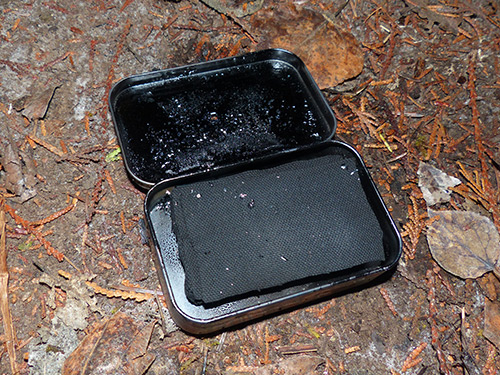
Once it has completely cooled, open up the tin and take a look at what you've got:
- Undercooked - you will see potions of it that are not fully black. If that is the case, re arrange the cloth pieces so that the uncooked ones are on the outside of the pile, and simple cook it again.
- Overcooked - you will see that it is very delicate, and crumbles to dust with the slightest pressure. Or it may be completely burned up in which case all you are left with is ashes. In this case you've got to start over.
- Just Right - Completely black, still somewhat soft, not brittle, not too fragile. Still holds its shape. Nice job! The picture above is of perfectly prepared char cloth.
How to make a fire with char cloth
I wrote a whole separate article on how to make fire with char cloth using the flint and steel fire making method. You can check it out here.
Alternatives
Back in the 1600's and 1700's, people's relationship with cloth was different, because it wasn't as common as it is today. While today we live in a throw away culture, back then every bit of cloth was an important resource to be guarded. As such, cloth was a precious commodity, and often times people simply didn't have any spare cloth to make char cloth, so they used alternatives.
Charred plants also work. Think super dry, fluffy plant material like seed heads or long fibrous inner bark strands. Dry, punky (partially rotten) wood also works. A container called a tinder box is used to hold them, and they are partially burned to make the char needed to catch a spark. As they are used, additional material is added to the bottom of the tinder box to keep a full supply. This was the most common material used traditionally. The big advantage of course is that plants are highly accessible, more so than fabric.
Other options include:
- Tinder tube - A traditional method in which a metal tube that protects the partially burnt end of a cotton rope. The partially burnt end catches the spark.
- Charcoal from an old fire
- A very dry old burned log
- Tinder Fungus and Amadou
- Extra fine steel wool
How to store your char cloth
You'll definitely want to keep your char cloth very dry and protected. I keep mine in the same tin I cooked it in, and then put that in a water tight container or bag along with my flint and steel kit. Super handy, and ready to go when you need it!
Where it all leads
We live in a crazy culture that all too often fosters disconnection, and a myriad of issues that negatively impact our health, our families, and our communities. Making your own char cloth is a simple yet profound accomplishment that brings you into deeper connection with your basic needs as a human being. Making fire is a big deal, and our lives would be dramatically different without it. Yet most people today take it for granted.
How would you feel about fire if you went without it for a day or a week?
When people come to Twin Eagles Wilderness School and are faced with the challenge of making their own fire with their own hands directly from nature, it takes them some time. They have to put in the time and effort to gain proficiency in this basic skill, and have a completely different relationship with fire afterwards, one of tremendous humility, gratitude, and respect.
I imagine what our world would be like if we each had that kind of relationship with our most basic needs as humans. That is the work we do here at Twin Eagles Wilderness School, to bring that level of relationship back to the people.
Interested in being personally mentored in Wilderness Survival & Primitive Skills, on a transformational journey of connection to nature, community, and self?
Check out the Twin Eagles Wilderness Immersion Program.
comments powered by Disqus
Return from Char Cloth to Wilderness Survival Guide
Return from Char Cloth to Wilderness Survival (homepage)
Track Us